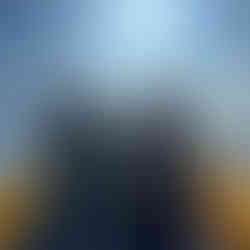If you think about it, machines are heavily involved in animal research nowadays. In our case, we sail out at sea with a boat, we fly drones, we rely on GPS, we use computers to analyse data. More recently, we even started "teaching" computer software to help us perform complex tasks that are too time consuming for our lifespan! So this blog is all about machines.
Machine learning expert
What is special this year is a visit from our colleague Dr. Jasper Eikelboom from Wageningen

University! Jasper is on board (in the team but this summer also literally) to apply machine learning methods to our common dolphin data collected with drones. Jasper is specialized in tracking land-mammals through bio-logging and artificial intelligence. He focused on tracking animals in Africa to protect the rhinos from poachers. So besides the novelty of Jasper's research, he also covered a very important conservation topic. To stay in line with research and conservation, we brought him out to the field to see how we collect data at sea and to understand how the swimming with dolphins activities occurs in the Azores. He brought along his wife Lieke who works at the police in the Netherlands, a great duo to bring out in the field!
Can machine learning expert handle machines on a machine?
To stay in line with machines, our drones are still working perfectly and we continued to collect data on groups of common dolphins. As machine learning expert Jasper was already comfortable on the boat after his first trip, we thought we could challenge him a little...Was he able to handle a machine (drone) on another machine (boat) on a moving surface (ocean swell) in changing environmental conditions (wind, sun, splashes) as good as he is at applying machine learning? We put him to the test! The training on land was fast so it was looking hopeful! Soon the next test came at sea, and without thinking he easily adapted and was catching and launching drones one after the next! Not bad for a land-mammal scientist ;)
What did we encounter at sea?
Ironically, the first thing we saw on our trip at sea was a land mammal! It was
almost too much of a coincidence, but also a sad story. This animal had what looked like hooves and 2 visible hind legs, so we think that it was a cow....that must have drowned at sea. It was already quite degraded so the true ID of the species remains a mystery. Thankfully we also got to see some marine life. We successfully saw the main target species for the research on every trip, which were the common dolphins! Next we also saw some bonus species: a sea turtle and a hammerhead shark! More on the hammerhead will be kept for our next blog.
Drone footage taken with research permit DRPM/LEMASM 2023/005 and AAN permit 41460/2023
Land-mammal scientist back on land
Next, we showed Lieke and Jasper how we find dolphins from land. No machines involved this time. We went back to old-fashioned binoculars. Without this method

though, we would be spending lots more gasoline at sea by searching for dolphins from the boat, we would risk not to find any dolphins at all, and we would also risk to find different species than what we want to study. So finding dolphins from land and directing the boat, is a crucial part of making our research a success. We took Jasper and Lieke to show them this method too! As Jasper is used to observing land-mammals from a helicopter from his research, observing dolphins from binoculars was a piece of cake. It took all of us about an hour to find dolphins, as some days, its all about the wait. Waiting for dolphins to come close enough for us to spot them. But sometimes, there just are none around. We thought that too but luckily, in the furthest corner of where we could look, we found a pod of dolphins in the glare of the sun!
What did Jasper think?
Well, it may sound terribly stupid: but I did not consider the fact enough that dolphins have a 3D space to manoeuvre in. The moment Lieke and I jumped in the water, the dolphins immediately dove down to get away from us. This obviously changes the way we should analyse the movement responses of these animals to humans, compared to how zebra and wildebeest respond to humans.
Furthermore, as more of a desktop ecologist myself, it makes me appreciate the value of having data more. There are so many factors that come into play before the drone data can actually be gathered: a) not too fast blowing wind; b) boat and skipper availability; c) solar angle (so early in the morning!); d) cloud cover; e) arranging observers on land; f) funding... the list goes on. I promise I will never complain about having to pre-process data for months on end; data that I just plucked from an online repository or got from colleagues that collected all the field data themselves.
Only too bad that Professor Frank van Langevelde didn't dare to get his feet (literally) wet, and chose to continue looking at the all-too-familiar African ungulates this summer ;)

Diving common dolphins filmed by Jasper Eikelboom.
The 2023 field-season is funded by Catharine van Tussenbroek, Research equipment and supervision is from Wageningen University, and researcher funded by: INREF: Beyond Anthropocene Pressures. The boat is used from the whale watching company Terra Azul Azores Whale Watch.
Authors: Fadia Al Abbar & Jasper Eikelboom


























